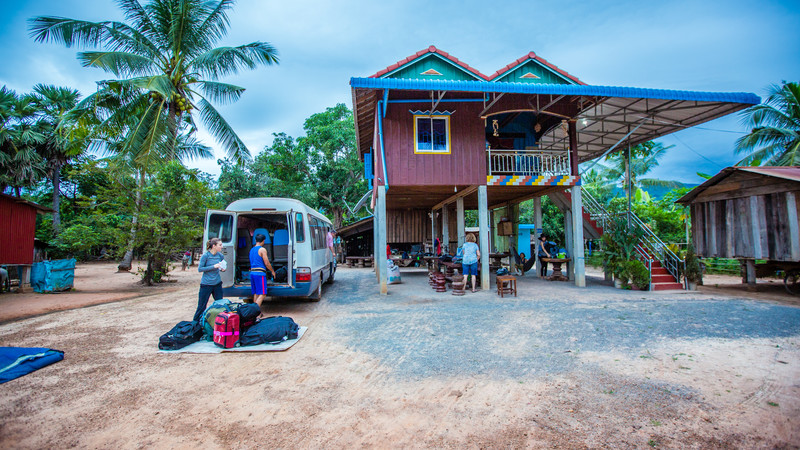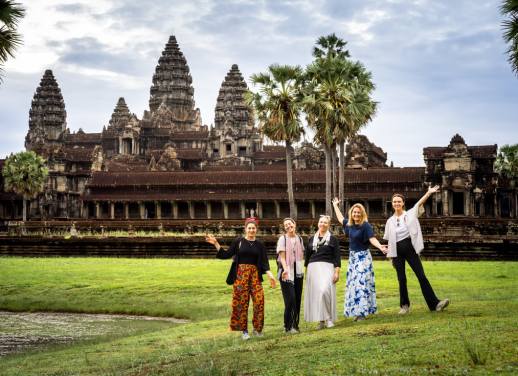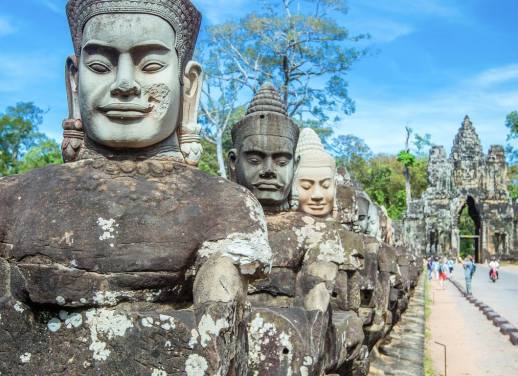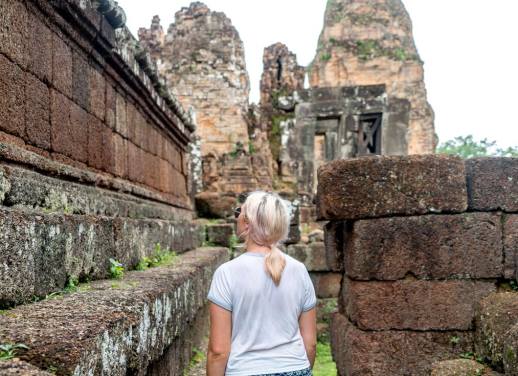When travelling overseas, nothing gets you better acquainted with the local culture than spending some quality time with the locals themselves.
Whether it’s having a meal at a family-run restaurant, travelling by local transport, or sinking a few beers at a favourite local watering hole, you experience a seriously authentic shift the minute you step outside the tourist bubble and start interacting with the people who live there. So naturally, one of the most humbling and genuine ways to understand a country’s culture is to go all-in on a community homestay.
For some people, the thought of leaving the comfort of a hotel behind and venturing into the home of a stranger, particularly in developing countries, can be a daunting undertaking. But when it comes to Cambodia, we can honestly say you won’t experience anything as eye opening and sincere as a community homestay.
So what exactly is a homestay?
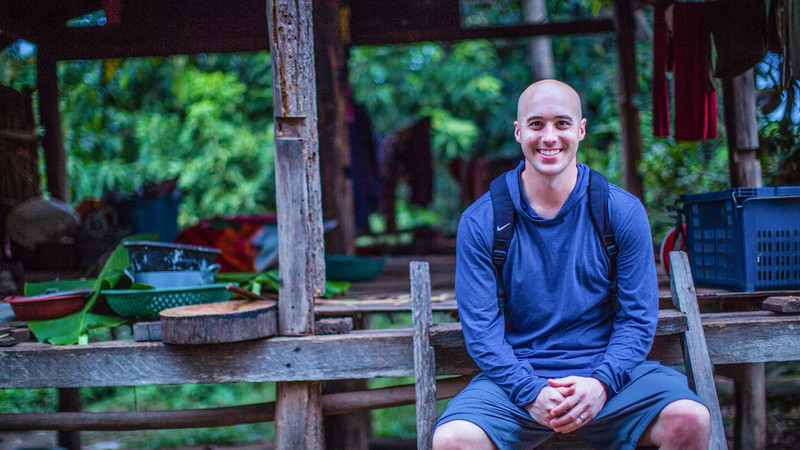
A happy traveller
Essentially, a homestay is where your tour group spends a night – and it’s usually just one – with a local family. The household – or households if your group is split up – welcomes you into their homes for the evening, where you’ll experience what it’s really like to live in this country, exactly as the locals do.
EXPERIENCE LIFE AT A COMMUNITY-RUN HOMESTAY ON ONE OF THESE SMALL GROUP ADVENTURES
Do you actually stay with a local family?
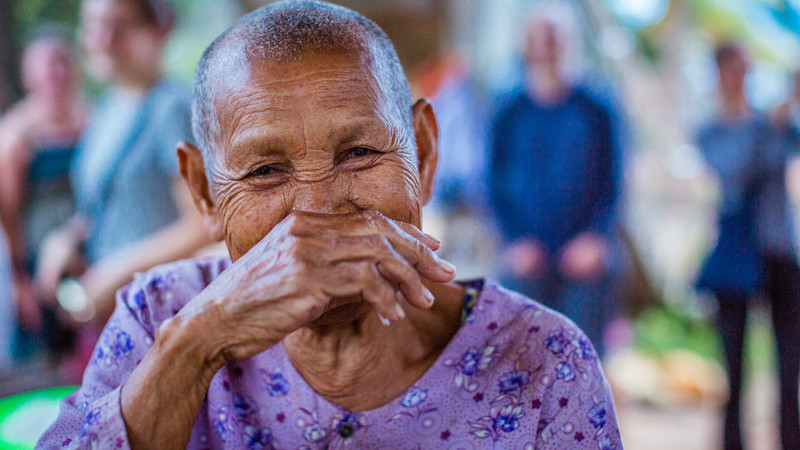
Making new friends
Intrepid stays at two community-run homestays on their tours through Cambodia. At both Sambor Prei Kuk and Chambok, you’ll stay with a local family who has volunteered to be part of the homestay initiative, with the purpose to connect people from different cultures, share daily experiences like cooking, and soak up life from another perspective.
The Sambor Prei Kuk homestay is about 3.5 hours drive from Siem Reap, and consists of a small village, where houses sit on stilts on the edge of the rice fields. The village has a school, health centre, Buddhist temple, and an ancient temple – a UNESCO World Heritage Site – of the Sambo people nearby.
Chambok is located about three hours from Phnom Penh, en route to Sihanoukville. In Chambok, they have similar village features to Sambor Prei Kuk, as well as a community centre where they serve food and drink, and a lush natural environment with waterfalls and swimming holes.
RELATED: 22 PHOTOS OF AN EPIC CAMBODIAN ADVENTURE WITH INTREPID
What are the houses like? Do I get my own room?
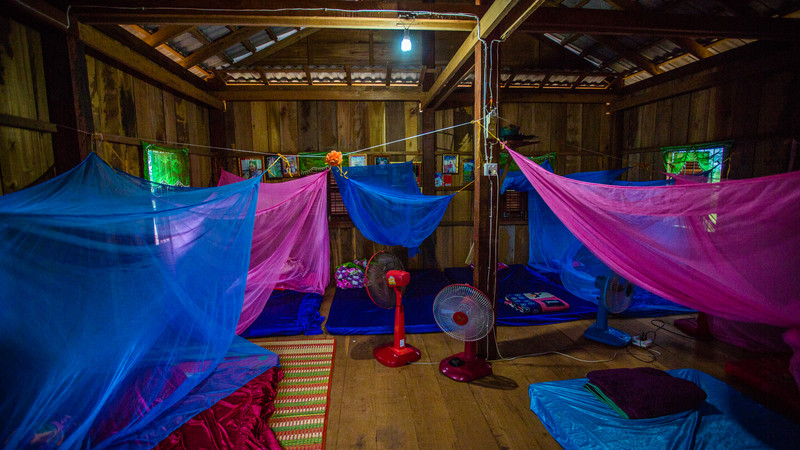
Bedtime
Homestays are created with the aim of providing as authentic an experience as possible.
In Cambodia, houses are fairly simple, with only a small number lucky enough to have electricity (and even then it’s not the most reliable). During my own homestay experience, there were a few power outages later at night. The family we stayed with were totally unfazed about the lights going out and their tiny television failing, simply shrugging and wishing us a good sleep.
When it comes to sleeping arrangements, the host families maintain a separate multi-share room for visitors, either in their house or next to it in a type of ‘main hall’, to give a sense of privacy when it’s time to hit the hay. Bedding is pretty basic; either mattresses on the floor or beds, however sheets and the all-important mosquito nets are always provided. During my own homestay experience, we found a beautiful serenity about sleeping in a village with minimal power. With the exception of some animal feet scampering across the roof and a few rumbles of thunder, it was pure, blissful silence.
Depending on where you are, the bathroom situation varies. A few houses have a bathroom in the house, while others have one outside. Bathroom facilities are squat-style and Western toilets, and usually include a washing area. This may be a shower, or a more rustic ‘shower’, where you’re provided with a large bucket of water and a smaller scoop to pour the water over yourself.
SUBSCRIBE TO INTREPID’S NEWSLETTER FOR TRAVEL TIPS, COMPETITIONS, GIVEAWAYS & MORE
Ok, we’ve arrived – now what?
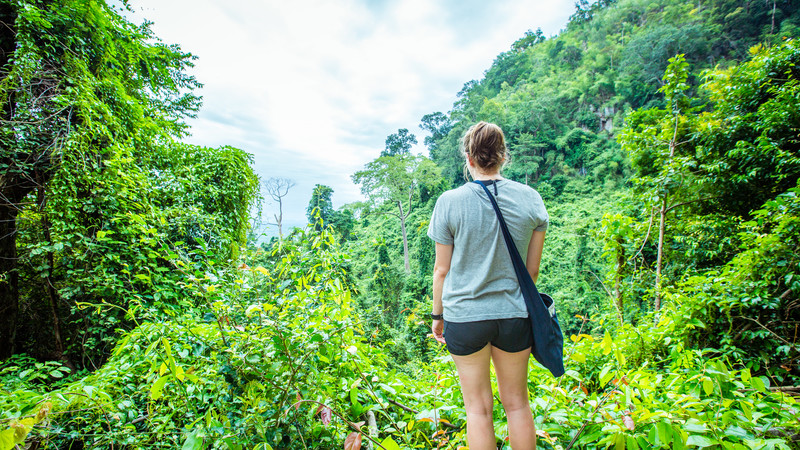
Hiking into the jungle
Expect a few activities that allow for more interaction with the family’s way of life, like walks and cycling tours, ox cart rides, and activities like basket weaving, rice wine making, and rice noodle making.
In Chambok, the rural region is renowned for its ecotourism, with oodles of natural beauty including a waterfall, bat caves up in the mountains, and sparkling swimming holes. You’ve got the option of trekking to a nearby waterfall with your host family, then check out a traditional Khmer dance performance when you get back. In Sambor Prei Kuk, you can visit some of the oldest temple ruins in Cambodia, dating back to the 6th century, for just US$3.
RELATED: WHAT IT’S LIKE TO DO A HMONG HOMESTAY IN THE HILLS OF SAPA
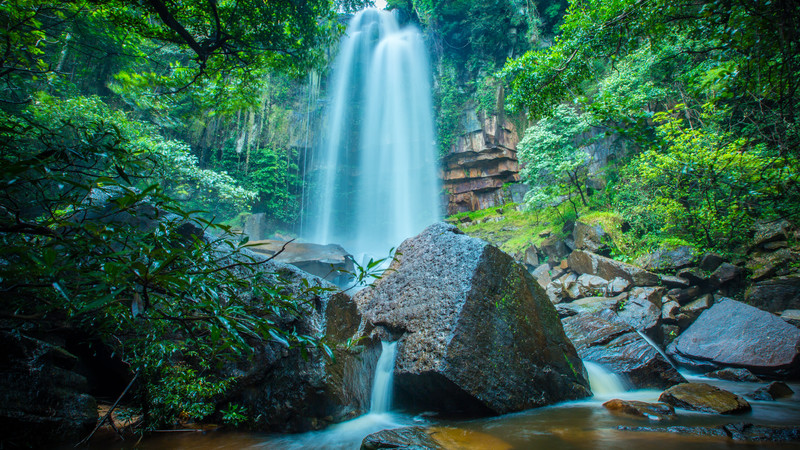
The serenity…
But one of the best experiences is simply talking with your host families, about their children, their jobs, their friends, hobbies and lives. The Cambodian people are so open and friendly, and create a real sense of inclusion at these homestays. As a result, the families enjoy showing you their world, as well as learning about yours, so be prepared to show off some photos on your camera or phone, to give them a taste of your home and family too.
What kind of food will we be eating?
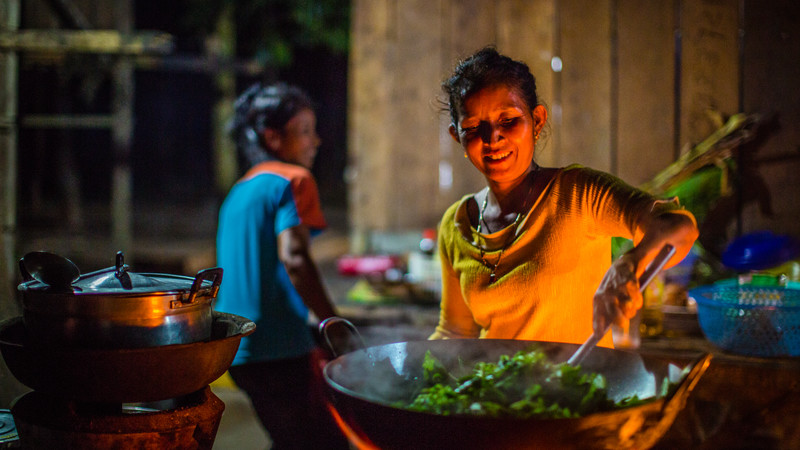
Cooking with our family
Food is one of the greatest methods for people of different backgrounds, cultures and languages to come together; it’s a real bonding experience.
During my homestay experience, my group and I huddled around a humble, outdoor kitchen, while our mother demonstrated how to prepare dinner. Rice, veggies and meat were fried up on the stove, and we all had a go at flipping omelette-looking dishes in a large pan. Suffice to say, those not familiar with the cooking style failed, but everyone shared laughter and good humour as we each contributed – in our own way – to the meal.
RELATED: EVERYTHING YOU NEED TO KNOW ABOUT CAMBODIAN CUISINE
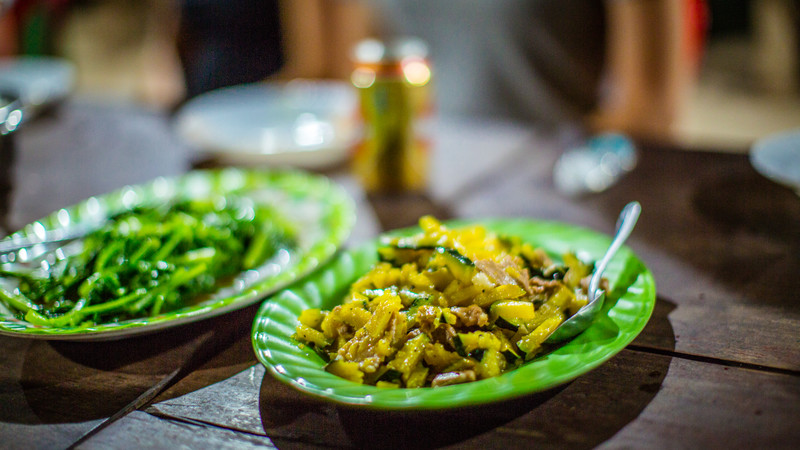
Delicious!
Afterwards, we sat at rickety wooden tables and shared the meal we had just cooked. Plates were passed around, and everyone helped themselves, talking loudly and gesturing when language was a barrier.
Typically, dinner includes a simple stew, a vegetable or meat stir-fried dish, steamed rice and local, seasonal fruit like banana or pineapple. At breakfast, fried rice and omelettes are served with hot tea and, if you’re lucky, some instant coffee.
So it’s worth doing a homestay, then?
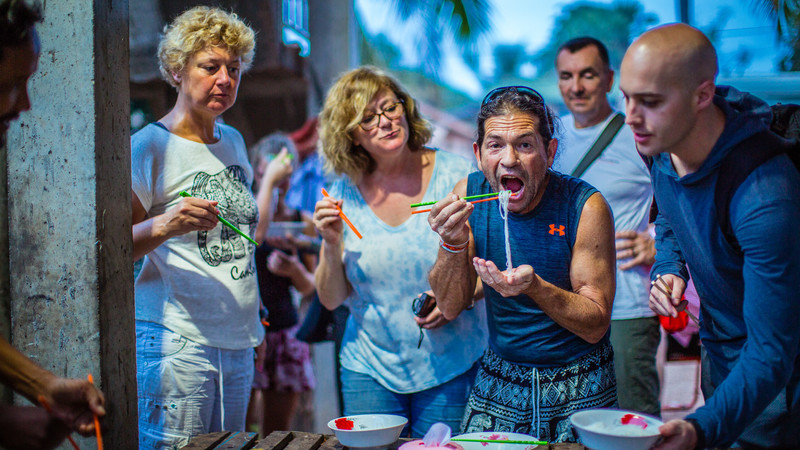
Enjoying rice noodles
Absolutely. A homestay anywhere in the world can be an unusual thing to grasp, but if you dive headfirst into the experience, it becomes one of the most rewarding and memorable adventures of all. From the moment your host family welcomes you into their homes, you’ll be completely humbled by the Cambodian way of life and I can honestly say you’d regret missing something as meaningful as a community homestay.
Ready to give it a go? Experience the best of Cambodian hospitality on one of these small group adventures now.
All images by Ryan Bolton.

